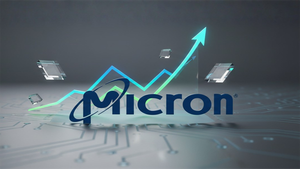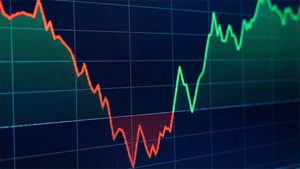
Medical device company DexCom (NASDAQ: DXCM) beat Wall Street’s revenue expectations in Q1 CY2025, with sales up 12.5% year on year to $1.04 billion. The company expects the full year’s revenue to be around $4.6 billion, close to analysts’ estimates. Its non-GAAP profit of $0.32 per share was in line with analysts’ consensus estimates.
Is now the time to buy DXCM? Find out in our full research report (it’s free).
DexCom (DXCM) Q1 CY2025 Highlights:
- Revenue: $1.04 billion vs analyst estimates of $1.02 billion (12.5% year-on-year growth, 1.8% beat)
- Adjusted EPS: $0.32 vs analyst estimates of $0.33 (in line)
- Adjusted EBITDA: $230.4 million vs analyst estimates of $251.9 million (22.2% margin, 8.5% miss)
- The company reconfirmed its revenue guidance for the full year of $4.6 billion at the midpoint
- Operating Margin: 12.9%, up from 11% in the same quarter last year
- Free Cash Flow Margin: 9.3%, down from 16.5% in the same quarter last year
- Organic Revenue rose 13.8% year on year (24.8% in the same quarter last year)
- Market Capitalization: $33.93 billion
StockStory’s Take
DexCom’s first quarter results reflected ongoing momentum in its core continuous glucose monitoring (CGM) business, with management attributing growth to expanded commercial reach, increased patient starts—particularly among type 2 non-insulin users—and new product enhancements. CEO Kevin Sayer cited record levels of new customer acquisition, driven by broadened prescriber activity and new payer access wins, as well as the recent launch of Stelo, DexCom’s over-the-counter biosensor, and updates to the G7 platform.
Looking forward, management underscored the importance of continued payer coverage expansion, particularly with all three major pharmacy benefit managers (PBMs) now committed to covering DexCom’s G7 for wider patient populations. CFO Jereme Sylvain emphasized the company’s focus on managing supply chain costs and margin pressures, while maintaining investment in product innovation and operational efficiency. Sayer stated, “We believe we can continue to demonstrate our value time and time again,” highlighting DexCom’s efforts to secure broader access, data-driven outcomes, and regulatory clearances.
Key Insights from Management’s Remarks
DexCom’s management provided detailed context on the drivers of first quarter performance and addressed several business-critical developments impacting the outlook for 2025.
- Type 2 Diabetes Access Gains: Management emphasized that recent wins with large PBMs have accelerated adoption among type 2 non-insulin users. The company saw a notable uptick in new patient starts from this population, which is now a material portion of overall new additions.
- Stelo Launch and Uptake: The over-the-counter Stelo sensor, targeting type 2 diabetes, prediabetes, and wellness users, continues to attract new customers. Stelo’s app enhancements and expanded distribution, including availability on Amazon, have driven over 200,000 downloads to date.
- 15-Day G7 System Clearance: DexCom secured FDA approval for a 15-day wear G7 sensor, increasing convenience and potentially improving margins. The product is slated for launch in the second half of the year, with work underway to ensure compatibility with insulin pumps and payer coverage.
- Operational and Supply Dynamics: The company navigated short-term supply constraints by expediting shipments and working closely with distribution partners. Management acknowledged incremental freight costs but confirmed that manufacturing output and product quality have stabilized.
- FDA Warning Letter Response: DexCom addressed an FDA warning letter received in March, implementing corrective process controls without impacting new product approvals or ongoing distribution. Management expects to resolve outstanding issues while continuing to prioritize innovation.
Drivers of Future Performance
Management’s outlook for 2025 centers on broadening access for DexCom’s CGM products, scaling adoption among type 2 diabetes patients, and improving operational efficiency amid cost pressures.
- Broader Payer Coverage: Coverage expansion among major PBMs is expected to drive growth in the type 2 non-insulin segment, unlocking a larger addressable market and supporting continued high rates of new patient acquisition.
- Product Pipeline Execution: The upcoming launch of the 15-day G7 sensor and ongoing software enhancements—such as Stelo app updates and integration with third-party wellness platforms—are positioned to support retention, differentiation, and margin improvement over time.
- Margin Management and Cost Controls: Management highlighted ongoing programs to offset elevated freight costs and inflationary pressures, including leveraging prior investments in automation, AI, and sales force expansion. The ability to balance investment with efficiency is seen as key to maintaining operating margins despite external headwinds.
Top Analyst Questions
- Matt Taylor (Jefferies): Asked about the closure of the gap between volume and revenue growth. Management confirmed inventory normalization and record new patient starts, indicating that volume growth remains robust and consistent with earlier trends.
- Larry Biegelsen (Wells Fargo): Questioned why full-year guidance was unchanged despite strong Q1 organic growth. CFO Jereme Sylvain said it was too early to adjust guidance after one quarter, emphasizing a commitment to deliver on full-year targets.
- Danielle Antalffy (UBS): Sought insight on DexCom’s resilience in a potential recession. Management cited strong payer coverage and the cost-saving value of CGM to health systems, expressing confidence in the company’s positioning relative to peers.
- Jeff Johnson (Baird): Inquired about gross margin cadence and whether manufacturing issues persisted. Management stated margin improvement is expected later in the year and indicated that manufacturing output and quality are on track, with no ongoing process issues.
- Jayson Bedford (Raymond James): Probed on international revenue softness and supply dynamics. Management noted localized strength in Japan and France but acknowledged timing variability in international coverage wins, resulting in some quarterly choppiness.
Catalysts in Upcoming Quarters
Looking ahead, the StockStory team will monitor (1) execution of the 15-day G7 system launch and its adoption rates, (2) continued expansion of coverage for type 2 non-insulin diabetes patients among payers, and (3) the pace at which supply chain costs normalize and margins recover. Additional signposts include data readouts from the type 2 diabetes randomized controlled trial and further growth in Stelo’s user base.
DexCom currently trades at a forward P/E ratio of 40×. In the wake of earnings, is it a buy or sell? Find out in our free research report.
Stocks That Trumped Tariffs in 2018
Donald Trump’s victory in the 2024 U.S. Presidential Election sent major indices to all-time highs, but stocks have retraced as investors debate the health of the economy and the potential impact of tariffs.
While this leaves much uncertainty around 2025, a few companies are poised for long-term gains regardless of the political or macroeconomic climate, like our Top 6 Stocks for this week. This is a curated list of our High Quality stocks that have generated a market-beating return of 176% over the last five years.
Stocks that made our list in 2020 include now familiar names such as Nvidia (+1,545% between March 2020 and March 2025) as well as under-the-radar businesses like the once-micro-cap company Kadant (+351% five-year return). Find your next big winner with StockStory today.




